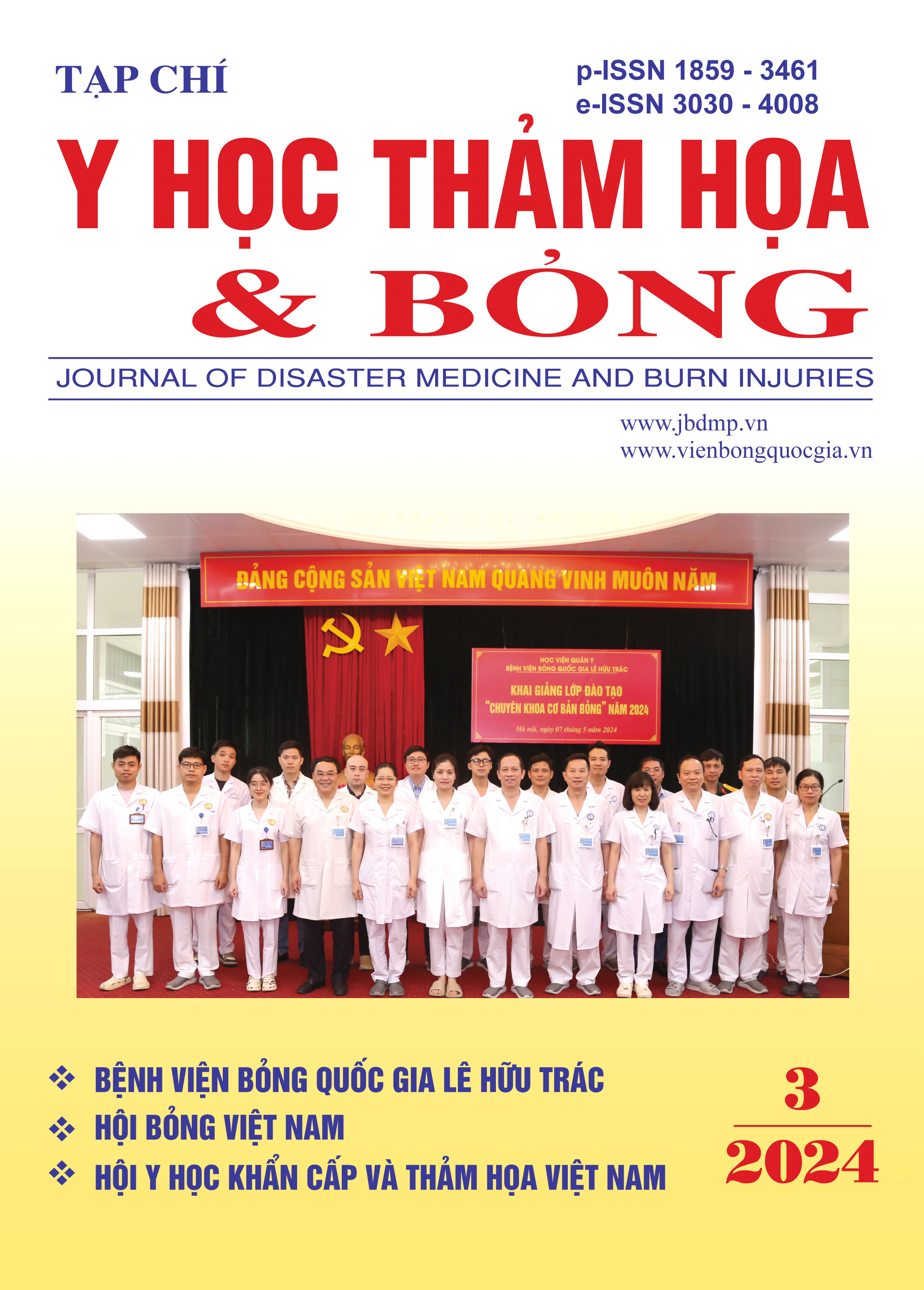ASSESSMENT OF APPLYING THE DORSAL BIPEDICLES FREE FLAP IN RECONSTRUCTION OF LARGE BURN SCAR OF FACE AND NECK
Main Article Content
Abstract
Background: Nowadays, face and neck reconstruction for post-burn patients, especially for large burn scars, always challenges plastic surgeons. The formerly reconstructive procedures, for instance, skin graft, local flaps, tissue expansion…have numerous disadvantages. For reconstruction of large burn scars in the face and neck region, the dorsal double-free flaps are the first choice to recover functional and cosmetic outcomes.
Patients and methods: Fifteen patients, 10 females and 5 males, were admitted at the Center of the Plastic, Reconstructive and Aesthetic Surgery of the National Hospital of Burn from August 2019 to August 2024. Range of age from 12 to 61 years old.
Nine dorsal double perforator free flaps with circumflex scapular artery perforator and contralateral posterior intercostal perforator, three dorsal double perforator free flaps with circumflex scapular artery perforator and ipsilateral posterior intercostal perforator two bipedicle flap with posterior intercostal perforator and ipsilateral posterior intercostal perforator and one flap with posterior intercostal perforator and contralateral posterior intercostal perforator, were designed at the dorsal region. Recipients were the facial artery and/or superficial temporal artery. The adipose tissue between the two pedicles was thinned before the pedicles divided. The pedicles of the flap were anastomosed with the recipient's vessels.
Results: Thirteen flaps survived completely and two flaps happened a distal part necrosis. The donor site was covered by using a split-thickness skin graft. The maximum length of the flaps we could obtain was 36cm, the largest width was 19cm. The patients were satisfied with both cosmetically and functionally.
Conclusion: Dorsal double pedicle free flap is a confident procedure in the reconstruction of large defects on the face and neck region post-burn patients.
Article Details
Keywords
burn scar in face and neck, free flap, bipedicle flap, dorsal perforator flap
References
2. H. Hyakusoku and J.-H. Gao (1994) The “super-thin” flap. British journal of plastic surgery, 47 (7), 457-464.
3. R. Ogawa, H. Hyakusoku, I. Iwakiri. et al (2004) Severe neck scar contracture reconstructed with a ninth dorsal intercostal perforator augmented “super-thin flap”. Annals of plastic surgery, 52 (2), 216-219.
4. V. Q. Vinh, R. Ogawa, T. Van Anh. et al (2007) Reconstruction of neck scar contractures using supraclavicular flaps: Retrospective study of 30 cases. Plastic and reconstructive surgery, 119 (1), 130-135.
5. V. Q. Vinh, T. Van Anh, L. Nam. et al (2009) Reconstruction of acid-injured face with occipitocervicodorsal super-thin flaps. Plastic and reconstructive surgery, 124 (1), 167e-169e.
6. R. Ogawa, H. Hyakusoku, M. Murakami. et al (2004) Clinical and basic research on occipito-cervico-dorsal flaps: including a study of the anatomical territories of dorsal trunk vessels. Plastic and reconstructive surgery, 113 (7), 1923-1933.
7. C. Angrigiani and D. Grilli (1997) Total face reconstruction with one free flap. Plastic and reconstructive surgery, 99 (6), 1566-1575.
8. H. Hyakusoku, D. G. Pennington and J.-H. Gao (1994) Microvascular augmentation of the super-thin occipito-cervico-dorsal flap. British journal of plastic surgery, 47 (7), 465-469.
9. V. Q. Vinh, T. Van Anh, R. Ogawa. et al (2009) Anatomical and clinical studies of the supraclavicular flap: analysis of 103 flaps used to reconstruct neck scar contractures. Plastic and reconstructive surgery, 123 (5), 1471-1480.


